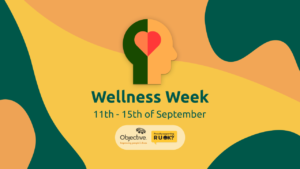In the ever-changing world of digital platforms, adaptation is the name of the game. User needs evolve, technology advances, and interfaces quickly become outdated. Companies that fail to keep pace with these shifts risk losing their customers and their competitive edge. That’s where usability testing comes in as one of the most vital methodologies in the realm of user experience (UX) research.
Step 1: Project Kick-offs – Laying the Foundation
The journey begins with project kick-offs, a pivotal phase. These can take the form of engaging conversations or interactive workshops. During this stage, it’s crucial to align with your clients’ goals and expectations. Are they seeking insights to shape their product roadmap, refine upcoming feature launches, or gauge user responses to their latest innovations?
Step 2: Product Walkthrough – Exploring the Terrain
Ideally, the prototype should be ready upfront, allowing researchers time to explore the platform thoroughly. However, the real world often presents delays. Flexibility and empathy are key, as UI designers are often under pressure with tight timelines.
Step 3: Define Research Objectives and Hypotheses – Crafting Clarity
With a deep understanding of the project and the platform, it’s time to work alongside your clients to define clear research objectives and hypotheses. This lays the foundation for your study and ensures everyone is on the same page.
Step 4: Recruitment – Finding Your Participants
Before recruiting participants, it’s vital to grasp the target audience’s demographics. This knowledge maximizes the value of their feedback. For instance, a health insurance provider may seek older participants to evaluate platform interactions, while a clothing brand targets young online shoppers.
Step 5: Running Sessions – Gathering Insights
During sessions, communicate clearly with participants. Assure them it’s not a test of their knowledge but an opportunity for honest feedback. Encourage them to think aloud as they navigate the platform to capture first impressions and emotional responses.
Step 6: Analysis – Uncovering Insights
After conducting sessions, dive into analysis. Various tools, such as Dovetail and empathy maps, can aid this process. Tailor your analysis depth to your clients’ preferences, from detailed statistics to general sentiment.
Step 7: Reporting – Crafting a Comprehensive View
Present your findings effectively. An executive summary, limited to a concise and visually appealing five pages, offers stakeholders a snapshot of the research’s outcome, even if they lack a UX background.
Step 8: Presentation – Guiding Next Steps
Whether through online presentations or face-to-face workshops, your role is to help clients understand the data, research outcomes, and actionable insights. This is where you collaborate to prioritize improvements, such as refining specific features or enhancing content based on user feedback.
In conclusion, the journey of product development is a constant work in progress. Continuous iterations and user validation are essential. Embracing usability testing allows companies to wear their customers’ hats, ensuring their digital offerings remain relevant, effective, and user-centric.


